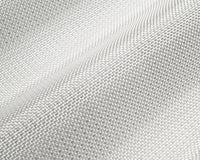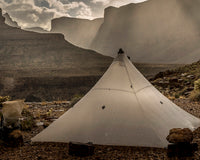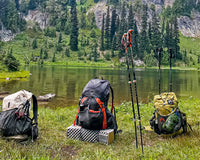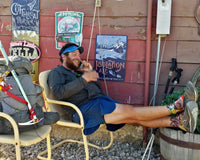
Leukotape is the beloved backpacking hack that stops hot spots in their tracks and keeps feet happy when you need them most. Between its incredible durability and strong adhesive (even when wet!) Leukotape sticks the landing where Moleskin and Duct Tape fall flat.
Hikers that tout a sub 15-lb base weight often will include Leukotape in their kit and value it not only as a blister bandage and hot spot healer, but for its versatility as well. What other on-trail applications could this terrific tape have that make it even more worth the weight? Here’s 9 ways you can utilize Leukotape on your next adventure.
1. Preventative Care for Hot Spots and Blisters

If you’re blister-prone and can predict where you’re likely to develop hot spots, you can break out your Leukotape before even stepping foot on trail. Keep blisters at bay and stop hot spots in their tracks by first drying the affected area, applying Leukotape directly overtop, and letting this awesome adhesive do its thing.
Though sources differ on whether you should apply it directly to your skin, I’ve never witnessed a hiker in the wild do anything other than slice a piece off and slap it on. Be aware that Leukotape is made with a natural rubber latex that may cause a reaction for those with sensitive skin or who have an allergy.
Ensure there are no gaps or creases between the tape and your skin, and never fully encircle your foot as it may restrict blood flow.
If you're experiencing high-friction areas beyond your feet, Leukotape can also help prevent chafing there too (think below your arm pits, between your thighs, etc.) If you’re facing persistent high-friction areas, it may be time to reevaluate your gear after Leukotape gets you to where you need to go. (New shoes? Toe socks? Shirt swap? Add Gurney Goo?)
2. Protection After a Blister Has Developed

If you don’t discover the high-friction rubbing point (on your foot or elsewhere) until after a bubbly blister has developed, a different protocol is required.
You’ll first need to drain the blister (be sure to first sanitize the needle or safety pin you’re using to do this with alcohol). Then clean the blistered area with water and mild biodegradable soap (remembering LNT, and keeping your suds well away from water sources). Next, apply antibiotic ointment and cover the affected area with a Band-Aid or gauze. Finally, secure your bandage system in place with Leukotape, which will also prevent further rubbing as you proceed down the trail and act as a barrier against infection.
3. Support for Injuries and Joints

Whether you’ve blown out a shoulder scampering up a rock face or are developing tendonitis after long days of hiking, Leukotape can be used to support injured joints, tendons, and ligaments. Use it to restrict movement and keep sprains rigid, or improve normal movement for overused knees or shoulders.
For taping methods that target specific areas of the body, check out Leukotape’s YouTube Channel, touting every tape tutorial you didn’t know you needed.

Note: Leukotape® P is the product sold through GGG, whereas Leukotape® K is the product featured in the YouTube videos. The former works better for blisters, while the latter is stretchable and therefore is more ideally suited for joint support.
4. Emergency Gear Repair

If you discover a rip in your tent, a snag on your puffy coat, or the soles on your shoes suddenly separating, Luekotape is there to help. When using it to patch gear, cut it into a circular shape and clean your gear as best you can before applying the patch. Though it isn’t advertised, Leukotape can basically act as Duct Tape in most circumstances involving minor gear repairs — just use common sense and don’t rely on it for weight-bearing gear such as trekking poles.
5. Cover Wounds and Skin Irritations

It’s hard to know what the trail will have in store for us on any given day, but it’s good to be prepared should accidents happen. If you develop a wound or skin irritation, Leukotape is a great bandage to last you until civilization, and will help prevent infection, too. Be sure to clean and dry the area before applying a strip of your new trail bff, Leukotape.
6. Improve Posture

As a hiker, I’m afflicted with chronic terrible posture, and a general full-body laziness whenever I come back from the trail. A few intentionally-placed strips of Leukotape revolutionize my recovery and encourage healthy posture — whether I’m working from home, tackling town chores, or simply deciding to splurge on some self-care.
Pro Tip: Take Only What You Need! Counteract the weight and bulkiness of a full roll of Luekotape by pre-cutting it into trail friendly strips. Apply these Leukotape strips to an empty ‘ready to discard’ sticker sheet (sheets that formerly held return address stickers works perfectly!). You’re now adventure-ready, and one step closer to zero waste too!
What other uses have you found for Leukotape? Leave your hiker-trash inspired innovations in the comments below!
Resources
- https://orthoco.com/taping/leukotape/
- https://altatherapies.com/services/therapeutic-taping/
- https://www.youtube.com/channel/UCFHIVORmkpnoajtbxQV-k6Q
- https://andrewskurka.com/quick-tip-field-friendly-leukotape-strips-for-foot-care-first-aid/
- https://www.greenbelly.co/pages/leukotape
- https://theclimbingdoctor.com/product/leukotape-and-cover-roll/
















5 comments
Tangent Trails
I’ve always rolled several feet of Leukotape around the shaft of my trekking poles, just under the base of each handle. When needed, I roll off the right length, cut with my trail knife and good to go. Just don’t forget your poles after that lunch break or after nature calls. :)
Tangent Trails
I’ve always rolled several feet of Leukotape around the shaft of my trekking poles, just under the base of each handle. When needed, I roll off the right length, cut with my trail knife and good to go. Just don’t forget your poles after that lunch break or after nature calls. :)
Cupsacoffee
When pre-cutting Leukotape into trail friendly strips, an alternative to applying these strips to an empty sticker sheets is parchment paper, which you may have in your kitchen. This worked really well on a recent 12 day trip.
The Lost Plot
Used leukotape for the first time on the JMT in July 2017. Most of the trail was either covered in snow or underwater, and feet were soaked all day, every day. Couldn’t believe how well the leukotape survived! I could go 3-4 full days in and out of water all day, and the tape was unphased. And, yes… no blisters. Nice.
Rick Niersbach
Early August 2017, as a few of us were heading to Katahdin to finish our thru hikes. We stopped at the Imp Shelter in Maine. They had just built this shelter, literally only about 1 month prior. Problem is, the roof was not completed, and we got hit by a monstrous rain storm. We now know that Leukotape can effectively stop leaks, as we spread a bunch of tape down the seam and simply watched the drips move along to the unsealed section. Just another dry night! Yahoo Leukotape!